I love parasols. They are dainty, delicate, and automatically find you feeling demure when using one. While still in use today, they very much peaked in popularity in the Victorian era, when they were seen as status symbols, indications of a sense of style, and yet another flirting tool. I have been looking forward to exploring this topic for Recollections for a long time now and since here in Denver we are having a gorgeous week of sunshine after a full week of below-freezing temperatures, I thought this would be a good week to dive in!
History of the parasol
I am mostly going to be discussing parasols from the 19th century, but I think it is worth touching on the history of the instrument. I was surprised to learn that parasols have existed since ancient times. I suppose this makes sense, as it is an invention that mimics the shade a tree provides, thus giving people a model. The depiction below is all the way from 485 BCE.
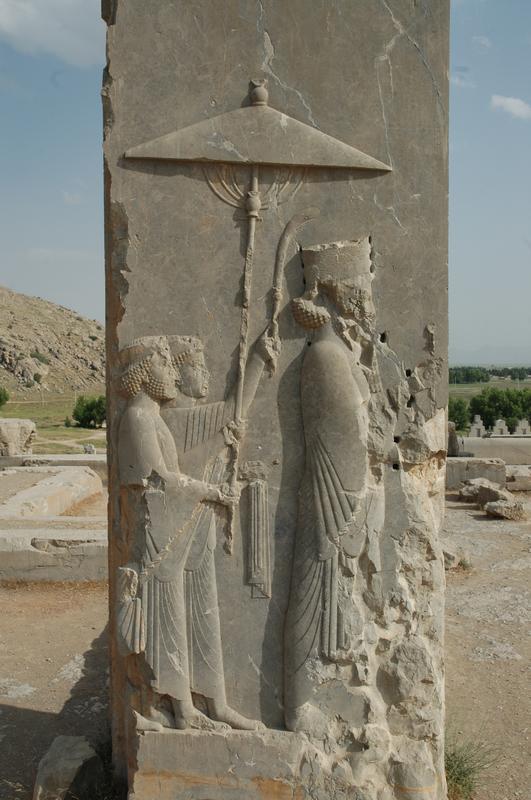
Victorians themselves were highly curious about the history of the parasol. An unexpected aspect of my research for this post was finding so many references to their ancient roots in various women’s magazines. An entire article on the subject of the parasol was printed in an 1878 issue of Madame Demorest’s What to Wear and How to Make it. The author goes into a lot of detail about how it was presumably invented and how it is an indication of the refinement of ancient cultures:
“The origin of the umbrella, and its twin-sister, the parasol, has been similar to that of the fan. All have, in early days, been fashioned after examples set in nature, and the branching tree, with its swaying foliage, has served as a model for imitation, both in respect of shelter and also of refreshing influence afforded to man.”
“The refinement of the Grecians is made apparent by the use of the parasol, and among that cultured people it was not only an article of luxury, but was regarded as distinctive to rank.”
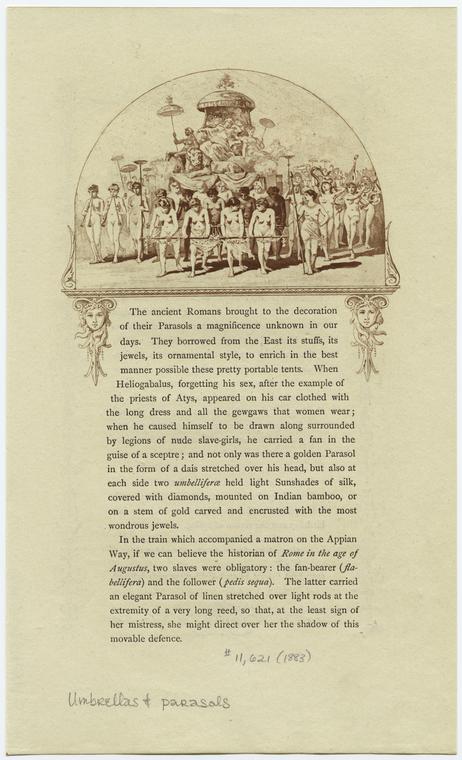
While parasols have been around for so many years, they did enjoy a huge leap in popularity in the 18th and especially 19th centuries. This is due to many factors including people appearing increasingly moving to public spaces for socializing, concerns over maintaining a clear complexion, and the onset of industrial avenues for creating them.
Etiquette for use
As with any accessory widely used by women in the Victorian era, there were guidelines and opinions on selecting and using a parasol. First, of course, is the selection.
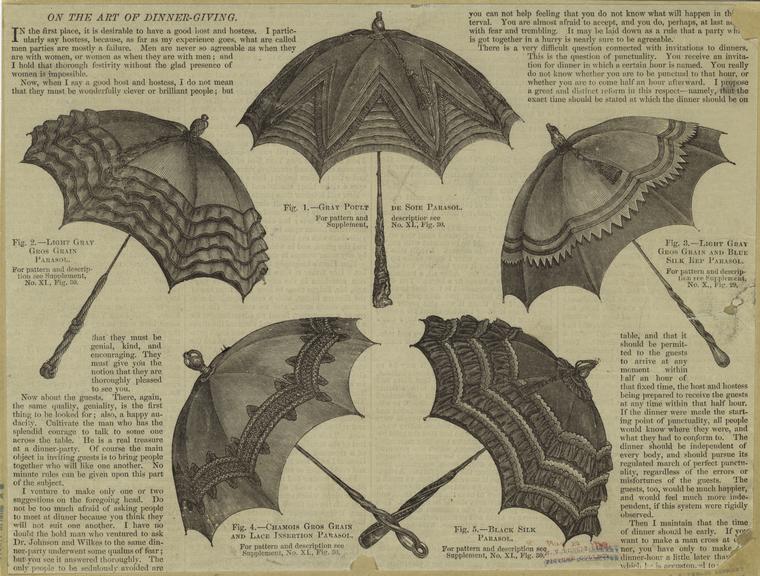
The Art of Dressing Well. A Complete Guide to Economy, Style and Propriety published in 1870 says of selecting a color:
“Parasols should be selected with some attention to their becoming or unbecoming effect. A pallid face seen in the reflected light of a pale-green parasol, will not look better than a florid, over-heated one under a canopy of rose-color.”
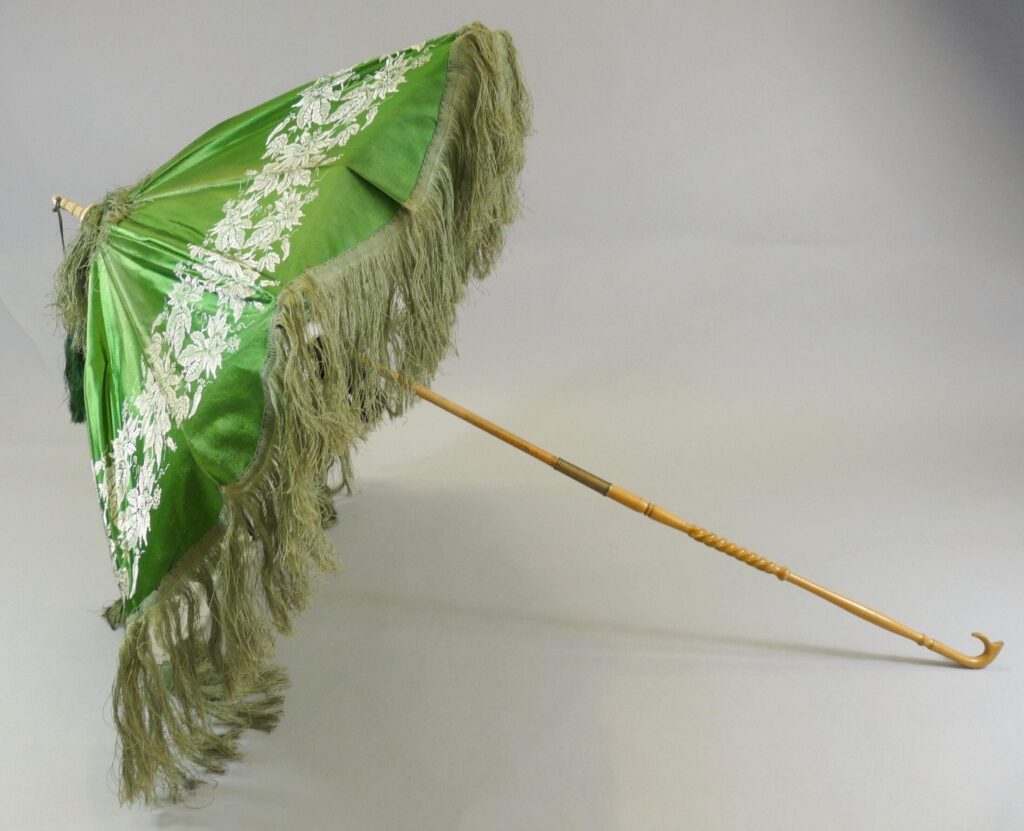
Madame Demorest, on the other hand, was more concerned with the latest trends in trimming:
“Other handsome parasols of new design are trimmed on the edges with fine lace; and this latter style of ornamentation, it may be added, will be largely employes. Excellent effects also are produced by the presentation of mosaic silks trimmed with lace.”
Certainly later in the Victorian era there were a lot of options for trimming as seen in these delightful examples.
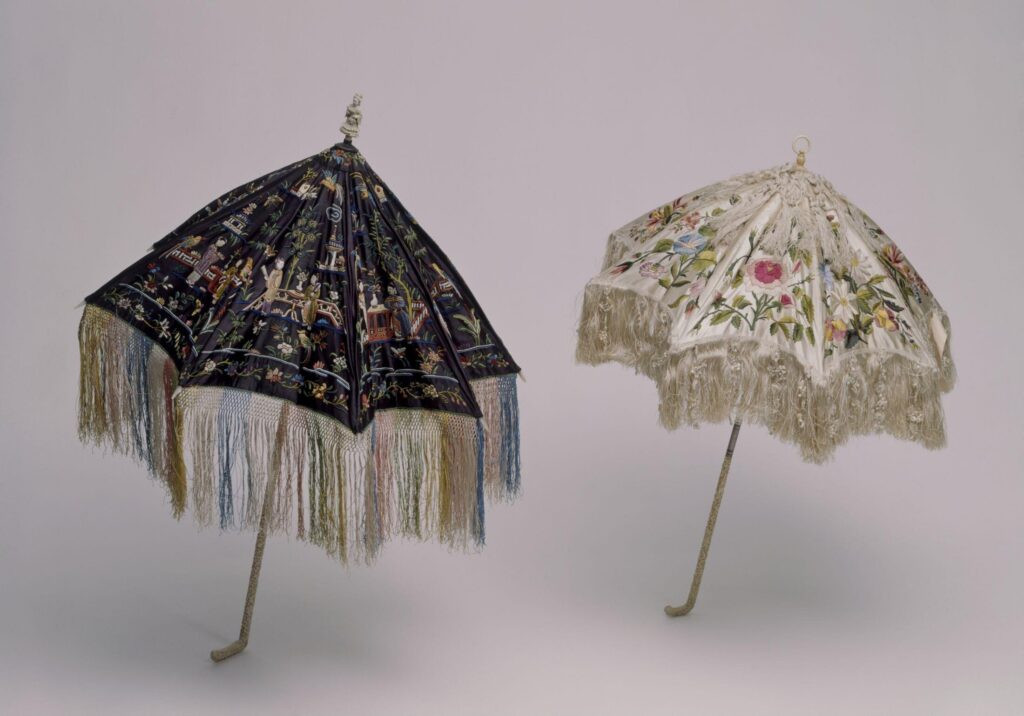
Although a parasol is meant to keep the sun out of the eyes, when selecting one for summer use, the prevailing opinion seems to have been to err on the side of less is better:
“A dressy parasol in summer is a handsome addition to the costume, but anything heavy, or the sun-umbrella, is out of place.” The Art of Dressing Well.
“A broad hat, completely shading the face, thick-soled boots, and a waterproof cloak, should always form portion of a pic-nic dress. Parasols and umbrellas are thereby rendered superfluous, and they are always awkward additions.” The Art of Dressing Well.
And of course, hold it properly. I’m not at all sure how one can get this wrong, but it seems to have been a concern, as the popular book The ladies’ book of etiquette, and manual of politeness; a complete hand book for the use of the lady in polite society, published in 1860, includes two rather detailed sections on the topic. The first, oddly, admonishes women who would put the handle of the parasol in their mouth whist in public:
“What are you doing? Sucking the head of your parasol! Have you not breakfasted? Take that piece of ivory from your mouth! To suck it is unlady-like, and let me tell you, excessively unbecoming. Rosy lips and pearly teeth can be put to a better use.”
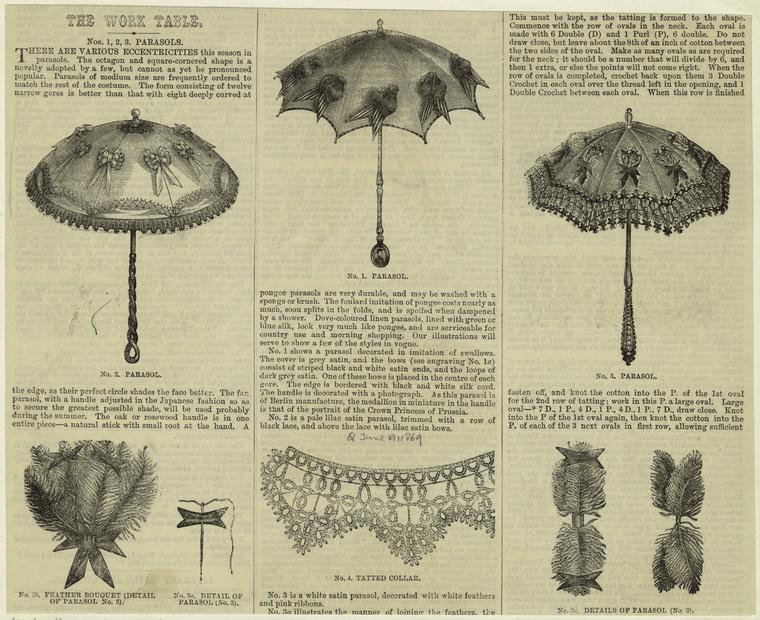
And after making sure that it’s not in your mouth, Victorian women needed to make sure it was being held correctly:
“Don’t hold your parasol so close to your face, nor so low down. You cannot see your way clear, and you will run against somebody. Always hold an umbrella or parasol so that it will clear your bonnet, and leave the space before your face open, that you may se your way clearly.” The ladies’ book of etiquette, and manual of politeness; a complete hand book for the use of the lady in polite society
Flirting with a parasol
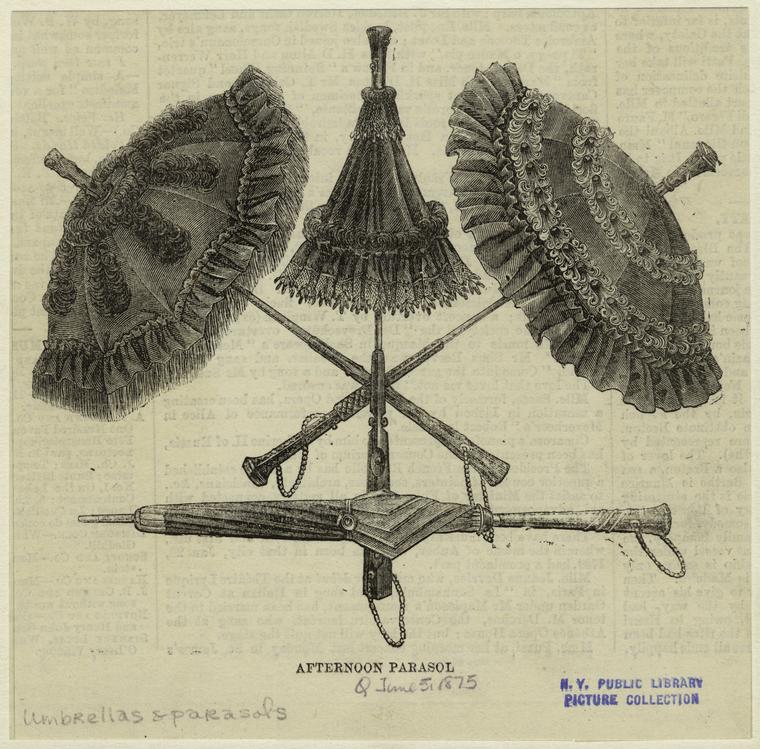
I would be remiss if I didn’t touch on the use of parasols to get one’s flirt on in Victorian times. As I have covered with my posts on the hand fan and glove etiquette, many people today enjoy talking about how prescribed flirting was in the 19th century and how physical items could be used for communicating with the opposite sex. The same is true of parasols and many a blog post provides the same instruction on how to use a parasol to flirt like a Victorian woman. For instance:
Carrying it elevated in left hand – “Desiring acquaintance”
Carrying it elevated in right hand – “You are too willing!”
Carrying it closed in left hand – “Meet on the first crossing”
Carrying it closed in right hand by the side – “Follow me”
Tapping the chin gently – “I am in love with another”
Twisting it in the left hand – “I love another”
Twirling it around – “Be careful; we are watched”
Using it as a fan – “Introduce me to your company”
It is fun to think about such signaling taking place using fans, gloves, and parasols, and imagining that everyone was well acquainted with such language, but flirting with a parasol truly only took place with coquettish looks from underneath. I have found one novelty item published in 1871 titled The Little Flirt that included instructions on how to flirt with various items, but it was meant to be for fun and doesn’t represent an entire secret language known by Victorians.
Victorian parasol trends
There were many different types of parasols and many trends in design during the Victorian era. Which one is your favorite?
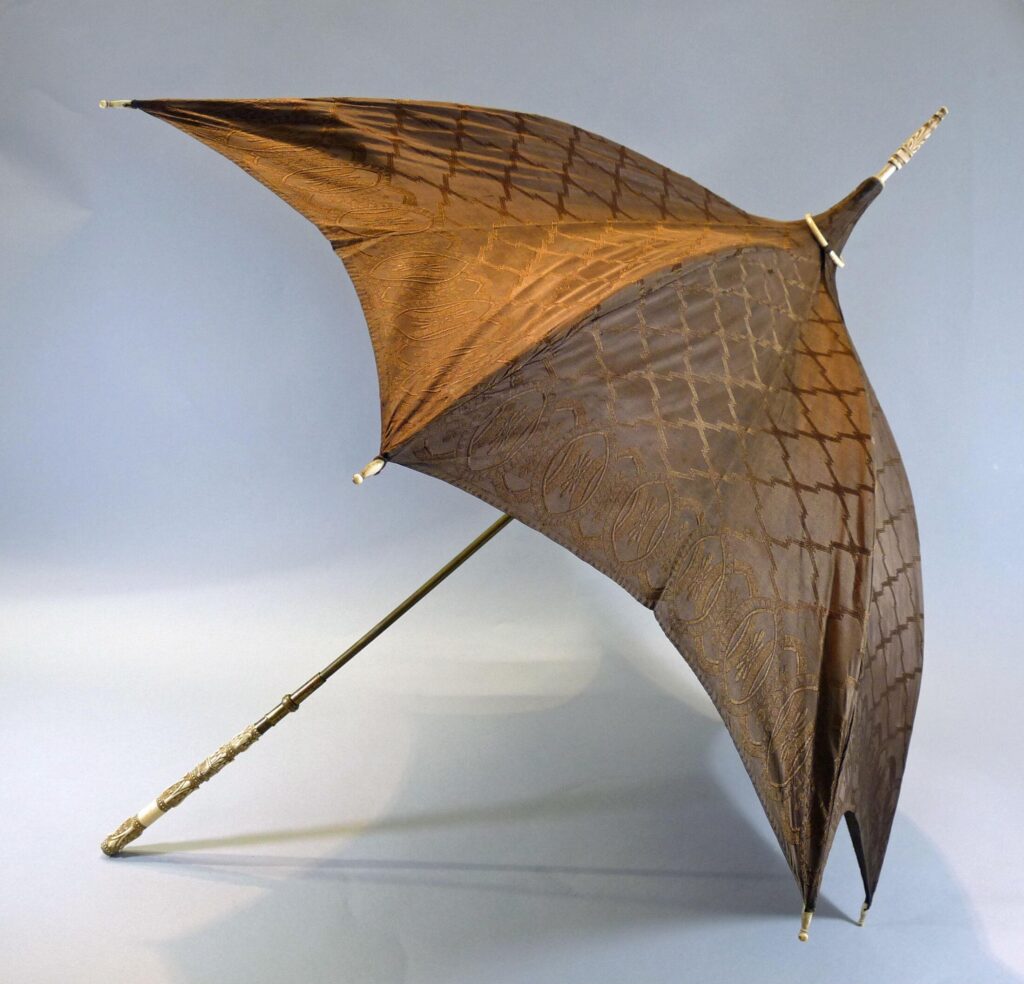
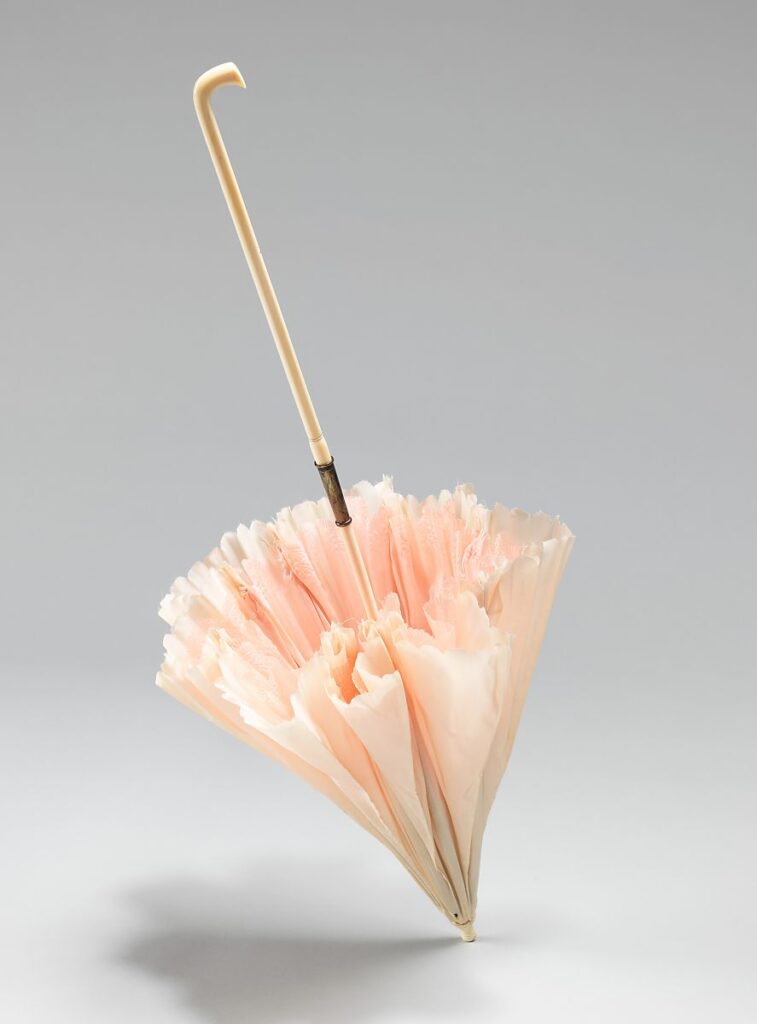
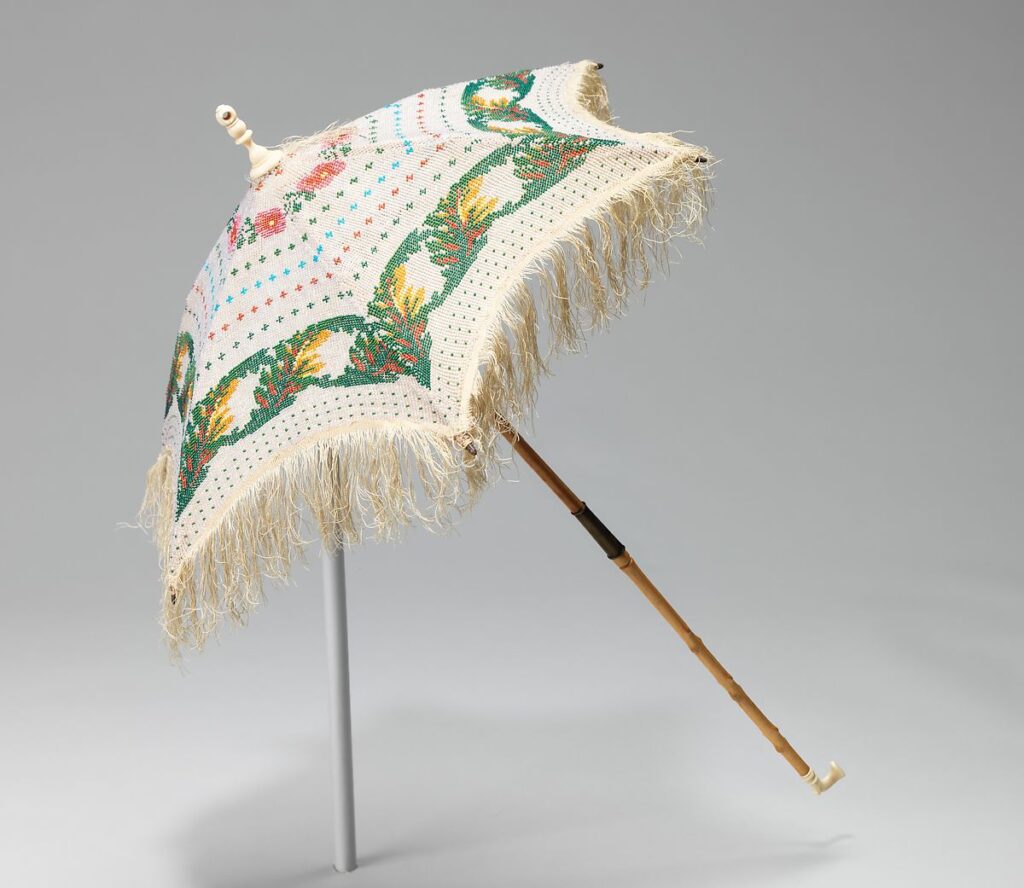
Says the Metropolitan Museum of Art about this unique beaded example: “This parasol would have been the ultimate fashion conceit because it is neither functional nor protective. It is the smallest parasol in the Brooklyn Museum Costume Collection, with a length of 22 3/4″. The parasol is especially unusual because it is beaded, worked in the same manner as the beaded bags that were so prevalent in the nineteenth century. The collapsible handle, which allows the parasol to collapse to a length of 12 1/2″, would allow the parasol to function more like a fan.”
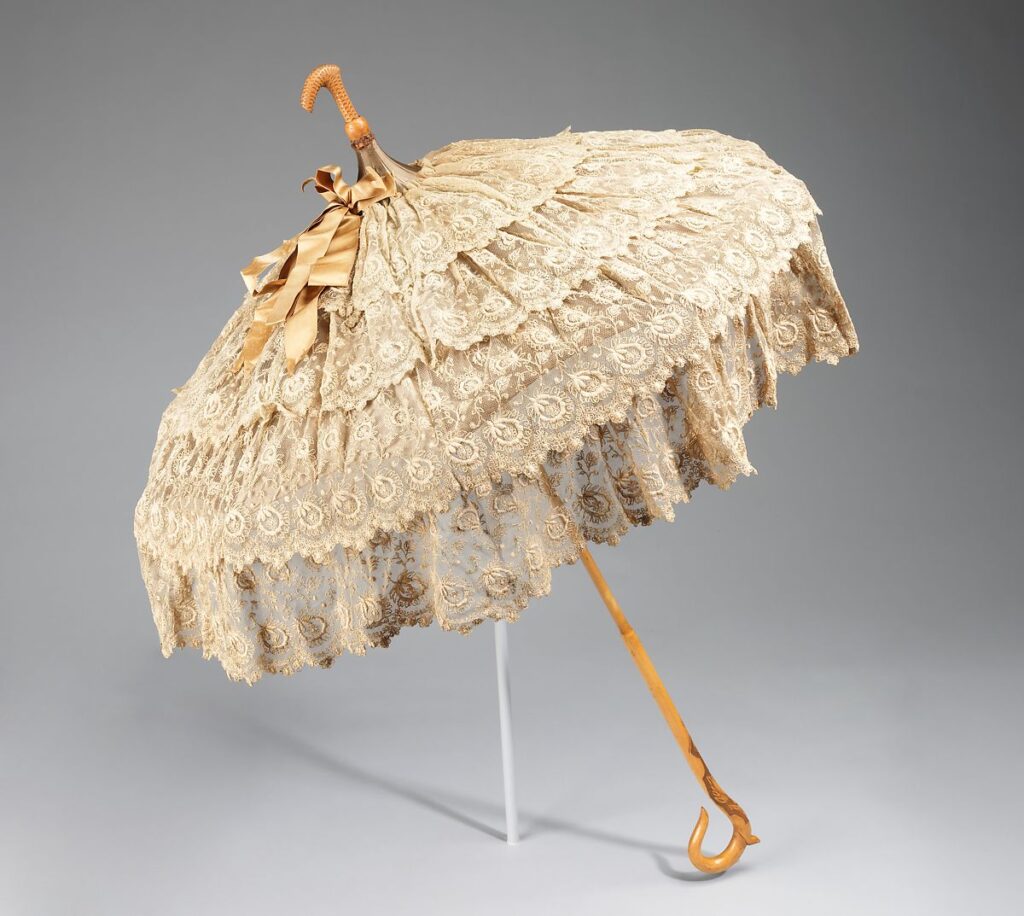

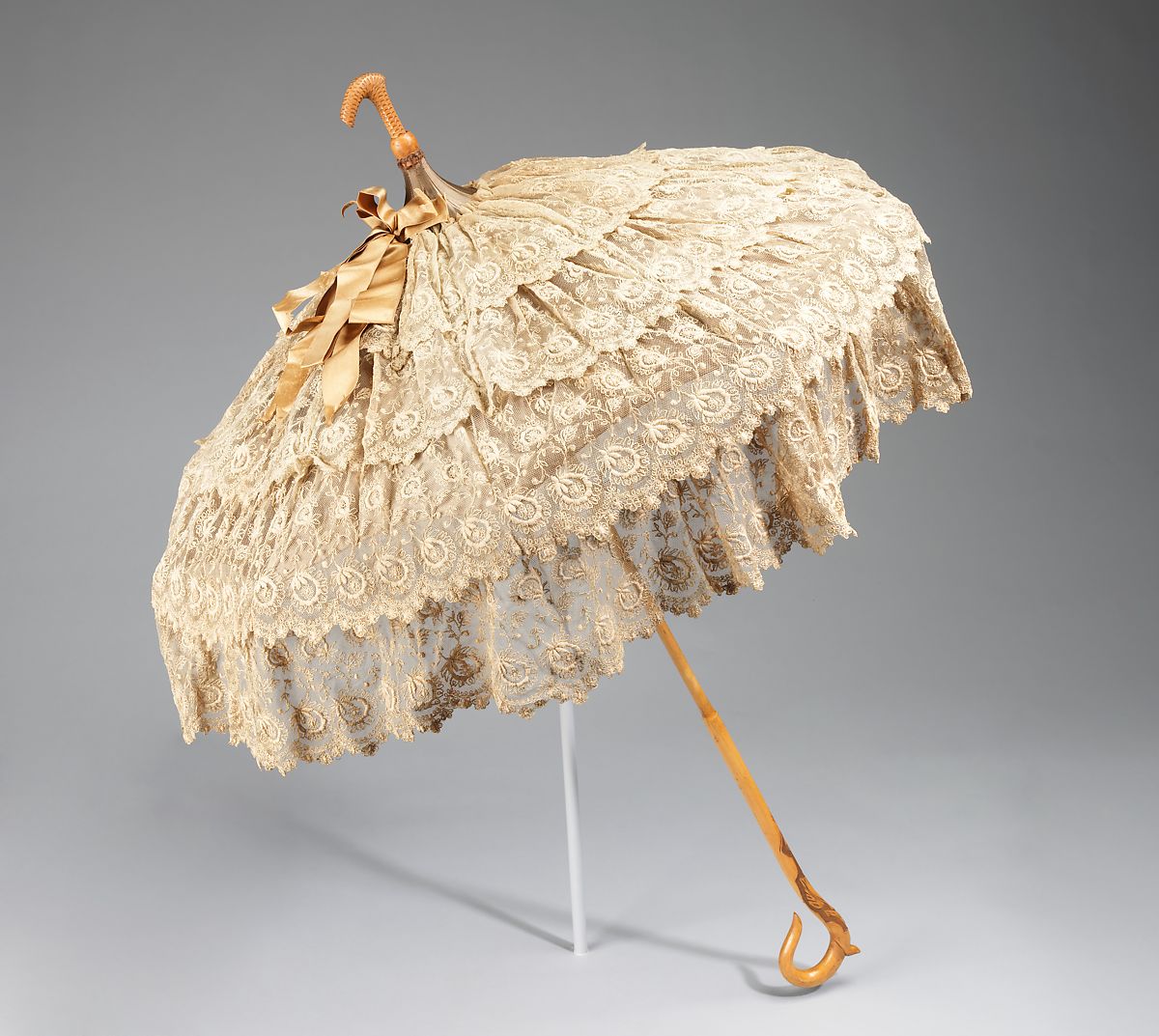
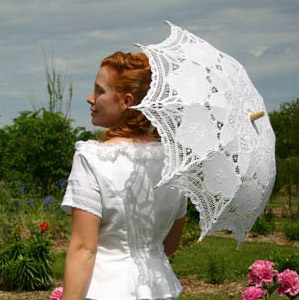












Leave A Comment